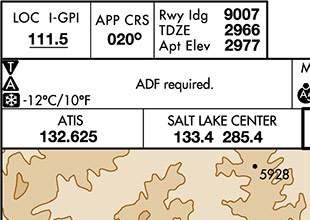An aircraft is flying at 10,000 feet msl. The outside air temperature is 5 degrees Celsius. Is the aircraft higher or lower than its altimeter indicates?
Typical of your instrument flight instructor to serve up this chilly question at a time of year when it is tempting to let your thoughts wander from the dense snowpack melting at the airport to the density altitude calculations you will make in a few weeks.
But all’s fair game for an instrument proficiency check, and after months of cold times at the airport, the CFII is still working, evidently, with a winter mindset.
If you’re stumped by the question, don’t punt with a gambler’s guess based on the 50/50 rule. Here’s a perfectly good answer to keep the question in play until you can check the numbers: It depends, you respond, on whether the stated temperature is above or below the standard temperature for 10,000 feet msl.
Turns out it’s higher than the ISA temperature of minus 5 degrees Celsius for that altitude, so the temperature error will place the aircraft higher than its altimeter indicates. It’s when extreme cold takes temperatures below standard that it “normally would be of concern to the pilot. Also, when flying in cold conditions over mountainous terrain, the pilot should exercise caution in flight planning both in regard to route and altitude to ensure adequate en route and terminal area terrain clearance,” cautions Chapter 7 of the Aeronautical Information Manual.
 The CFII now presents for your inspection the March 5 edition of the approach plate for the ILS or LOC RWY 2 approach at Kalispell, Montana’s Glacier Park International Airport (to keep the icy theme going). There in the plate’s top left corner, along with the symbols for alternate minimums and takeoff minimums, is a third symbol that looks like a snowflake, accompanied by a chilly-looking temperature range.
The CFII now presents for your inspection the March 5 edition of the approach plate for the ILS or LOC RWY 2 approach at Kalispell, Montana’s Glacier Park International Airport (to keep the icy theme going). There in the plate’s top left corner, along with the symbols for alternate minimums and takeoff minimums, is a third symbol that looks like a snowflake, accompanied by a chilly-looking temperature range.
That bit of symbology identifies the airport as “temperature-restricted.” Procedures (including reporting requirements) for temperature-restricted airports are generalized in Part 4 of the Notices to Airmen Publication. Consult the appropriate list to determine how the designation affects operations at a particular airport. For Glacier Park International, an altitude correction should be made on intermediate approach segments, using the ICAO Cold Temperature Error Table from AIM 7-2-3.
With luck, you won’t have to put the concept to use in your area for several months.



